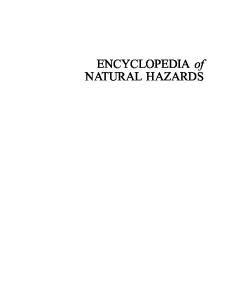Electrolysis of Alcohols in High Temperature-High Pressure Water
- PDF / 2,866,060 Bytes
- 6 Pages / 612 x 792 pts (letter) Page_size
- 58 Downloads / 314 Views
Electrolysis of Alcohols in High Temperature-High Pressure Water Asli Yuksel1, Mitsuru Sasaki2, Motonobu Goto3 1 Chemical Engineering, Izmir Institute of Technology, Izmir, TURKEY 2 Applied Chemistry and Biochemistry, Kumamoto University, Kumamoto, JAPAN 3 Chemical Engineering, Nagoya University, Nagoya, JAPAN ABSTRACT The design of clean, efficient and environmentally friendly routes that reduce the waste production and fuel emissions of pollutants into the atmosphere, produce clean, affordable, and renewable energy sources to lessen energy consumption and toxicity on the environment, has become a central issue of chemical research both in industry and academia. One of the approaches being used in green chemistry practices is to use water as a solvent and reaction medium where possible. Much of this work deals with liquid water at temperatures exceeding the normal boiling point which is denoted as sub-critical water. Electrochemical reaction, usually operated at atmospheric condition in water, is generally slow, although it has advantages over chemical reaction such as suppression of side reaction by tuning operating conditions. Since sub-critical water (7 MPa and 250 oC) has remarkable properties such as high ion product and low dielectric constant, it could be a suitable reaction media. We have been studying electrolysis of organic compounds in sub-critical water as waste treatment and molecular degradation technologies. Electrolysis in sub-critical water could degrade harmful and thermally stable organic compounds into innocuous compounds such as hydrogen and water. In this research, we focused on the investigation of the electrochemical reactions of alcohols in sub-critical water to evaluate possibility for the selective production of hydrogen and value-added chemicals. Electrochemical reactions were carried out in sub-critical water using a specially designed autoclave made of SS 316 with a volume of 500 mL. For comparison, thermal degradation experiments of alcohols were also conducted without any direct current loading at identical conditions. Here we employed glycerol and 1-butanol as model compounds of alcohols. As a result of 1-butanol experiments, butanal and butyric acid were produced via partial oxidation at 250 oC and by applying 1-3 A of direct current while no oxidation products were observed at the hydrothermal degradation run. As a gaseous product, hydrogen gas was generated according to the electrochemical reaction mechanism. In the case of glycerol experiments, the main gaseous product was hydrogen gas, whereas glycolaldehyde, lactic acid, and formic acid were generated as the main liquid products at 280 oC. Results indicated that greater than 92% of the glycerol could be decomposed under optimum conditions by hydrothermal electrolysis technique. This presented research will help to degrade stable organic materials in an environmentally friendly way and without need for secondary treatment processes. It will also address the need for novel more efficient techniques for the degradation of stable
Data Loading...











